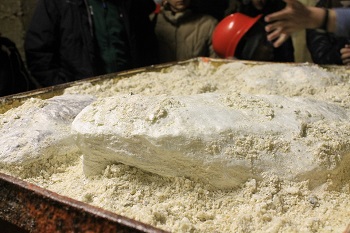9.50 Mineral Definition & Facts
Minerals come in all forms and are found all over the world. In this lesson, learn the definition of a mineral, explore mineral properties and discover how geologists measure and study these properties.
What is a Mineral?
If you look around the room right now, you will find that there are minerals everywhere! Minerals are part of so many items we use every day, that we can forget they’re in everything from cell phones and televisions to windows.
A mineral is a solid material that’s naturally occurring, so it’s not man-made. Minerals have a structure that makes them look crystalline, which means they look like they’re made of crystals. They’re created by processes that occur in the Earth, like volcanic activity. Some minerals are found in geodes, which are structures found in volcanic or sedimentary rocks and come from hollow bubbles created by lava or animal burrows.
The outside of a geode may not look like anything special, but inside there are often brightly colored minerals.
| |
|
What Are Minerals Made Of?
There are thousands of different types of minerals, and those minerals are made from elements. An element is also something that occurs in nature, and it cannot be broken down into a simpler substance. Some minerals are made from a single element, while others are made of two or more. For example, a diamond is made only from carbon. However, pyrite (which is also known as ‘fool’s gold’) is a combination of iron and sulfur.
Pyrite is a mineral that is made of two elements.
| |
|
1. Main points:
Minerals, naturally occurring solid materials with a crystalline structure, are found in everyday objects like electronics and windows. They are formed through Earth’s processes, such as volcanic activity, and can be found in unique formations like geodes. Minerals are composed of elements, either as single elements like carbon in diamonds or combinations like iron and sulfur in pyrite.
2. Questions:
- Content Analysis: What are minerals and where can they be found?
- Thematic Analysis: How are minerals formed and what are their characteristics?
- Socio-cultural Analysis: What is the significance of minerals in our daily lives and in nature?
3. Further Discussion:
- How do the properties of minerals affect their uses in various industries and products?
4. Answers:
- Content Analysis: "A mineral is a solid material that’s naturally occurring… Minerals have a structure that makes them look crystalline."
- Thematic Analysis: "They’re created by processes that occur in the Earth, like volcanic activity… Some minerals are found in geodes."
- Socio-cultural Analysis: Minerals play a crucial role in everyday life, being integral components of common items like cell phones, televisions, and windows, highlighting their importance in both technology and natural beauty.
Mineral Properties
Minerals are found on land, but that’s not the kind of ‘property’ we’re talking about here! A property of a mineral is a characteristic or quality that it has. Geologists are scientists that study rocks and minerals, and they use very specific properties when looking at and describing minerals. Color is an easy property to determine, and minerals come in all kinds of bright colors. Geologists also look for a property called luster, which refers to how well the mineral reflects light. Think of this as the shiny property.
Another property is hardness. Geologists measure how hard a mineral is by using something called the Mohs scale of hardness. Minerals that are extremely soft are rated a 1 on the scale, and minerals that are very hard are rated a 10. For example, talc is a mineral that is often used in powders, and it is so soft it scores a 1 on the hardness scale! Topaz, a mineral in topaz gems often used in jewelry, is quite hard (an 8 on the Mohs scale).
Talc is a soft mineral that can be crumbled in your hand.
| |
|
One property you may not be familiar with is streak, which is the color of a mineral when it’s ground down into fine powder. The property gets its name from the way that geologists determine a mineral’s streak–by dragging the mineral (in rock form) across a black or white plate to see the streak of color left behind.
1. Main points:
Minerals have distinct properties that geologists use to identify and classify them, including color, luster, hardness, and streak. Hardness is measured on the Mohs scale, with talc being very soft and topaz being quite hard. Streak refers to the color of a mineral in powdered form, determined by dragging the mineral across a plate.
2. Questions:
- Content Analysis: What are the key properties used by geologists to identify minerals?
- Thematic Analysis: How does the Mohs scale of hardness help in classifying minerals?
- Socio-cultural Analysis: Why are certain properties like color and luster important in the use of minerals in various industries?
3. Further Discussion:
- How might the properties of minerals influence their practical applications in everyday life?
4. Answers:
- Content Analysis: "Geologists use properties such as color, luster, hardness, and streak to identify and describe minerals."
- Thematic Analysis: "The Mohs scale of hardness measures how hard a mineral is… Talc scores a 1 on the hardness scale, while topaz scores an 8."
- Socio-cultural Analysis: The properties of minerals, like color and luster, are important in industries such as jewelry making and manufacturing, where the aesthetic and physical characteristics of minerals determine their suitability for various applications.
Lesson Summary
Minerals are natural substances formed due to processes inside of the Earth, and they have a crystalline structure. They are made from elements, and the elements within minerals give the minerals their different properties, or characteristics. Geologists study many mineral properties such as color, luster, hardness and streak.
